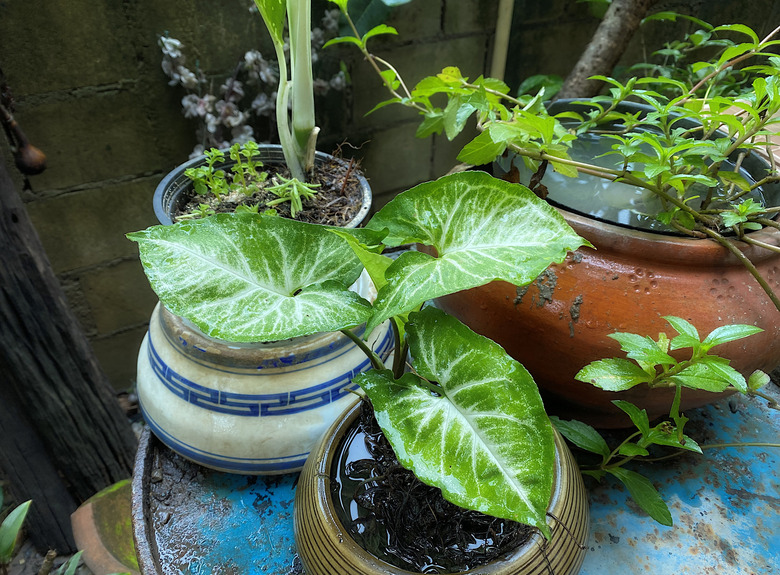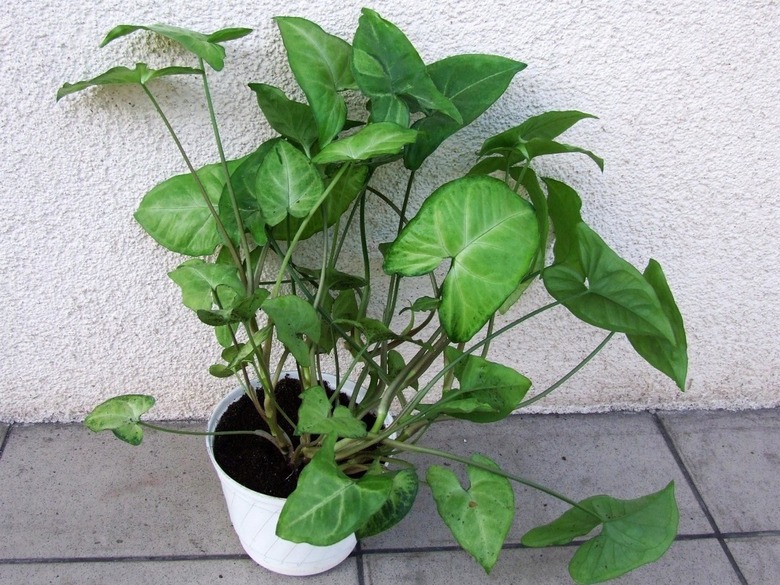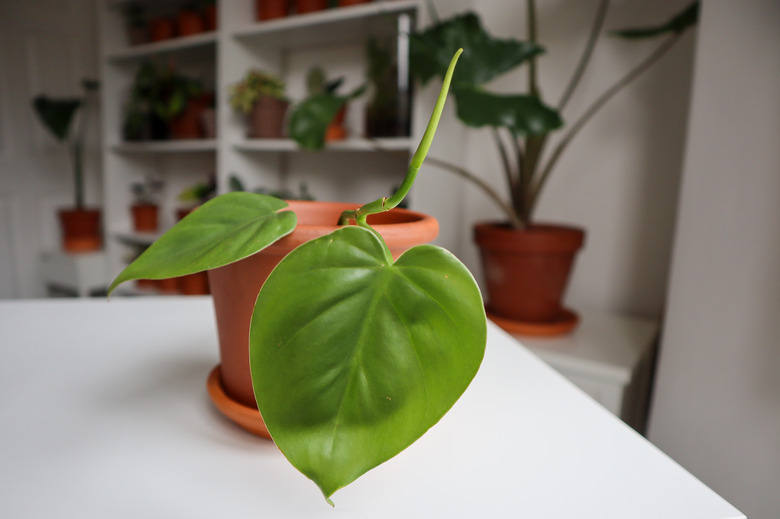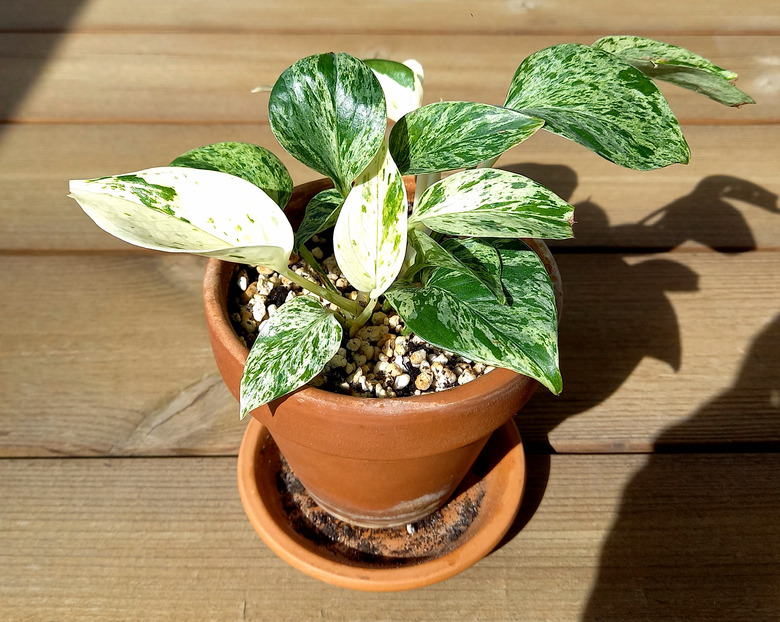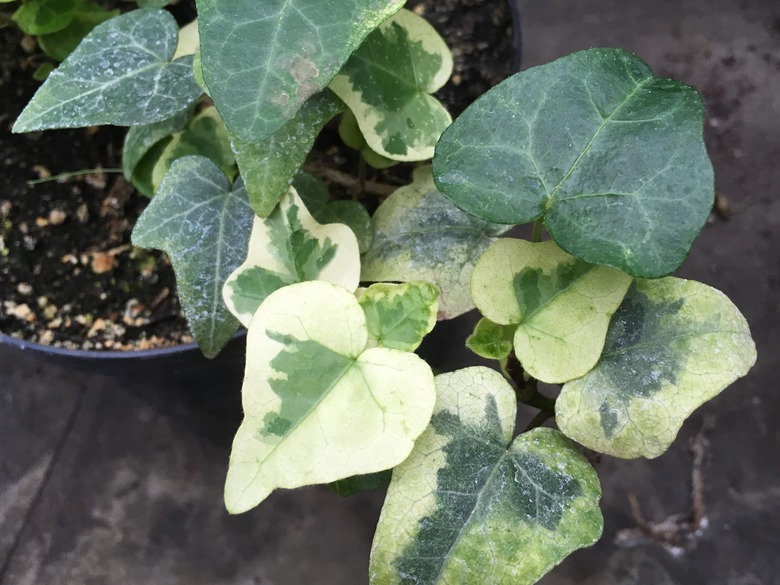How To Care For Vine Houseplants
A number of vining plants that are too cold-sensitive to be grown outside in most temperate areas are often kept as houseplants, either trained on supports or in containers or hanging baskets.
As is the case with outdoor plants, successfully keeping vine plants indoors requires thoughtful watering and adequate lighting.
Common Indoor Vining Plants
Let's take a look at some of the most common indoor vining plants and how to take care of them.
Arrowhead Vine
The arrowhead vine (Syngonium podophyllum, USA plant hardiness zones 10 to 12), which is native to Mexico, Central America and parts of South America, gets its name from its leaves, which take on an arrow-like shape as they mature.
Arrowhead vines need plenty of humidity to thrive. Therefore, the Missouri Botanical Garden recommends keeping this plant in a room with a humidifier. You can also place the container on a tray of wet pebbles instead. Keep the soil moist when the plant is growing and then reduce watering in the autumn and winter months.
Arrowhead vines need bright, indirect light and should be protected from direct sunlight, which can scorch the leaves.
Heart-Leaf Philodendron
Of the vining species of philodendron (Philodendron spp.), the one most commonly grown as a houseplant is the heart-leaf philodendron (Philodendron hederaceum, zones 11 to 12), which gets its name from the whimsical look of its foliage.
Philodendron plants should be watered regularly during the growing season, but give them less water during the fall and winter.
Tip
It is important not to overwater a philodendron vine, which, like other plants, can suffer from root rot when it receives excess moisture.
To give a heart-leaf philodendron plant a bushier appearance, the Missouri Botanical Garden recommends pinching the trailing stems of heart-leaf philodendron plants, which involves removing part of the stems to encourage two stems to grow above each cut.
Golden Pothos
The golden pothos (Epipremnum aureum, zones 10-12) dazzles with its philodendron-like, heart-shaped leaves, which are variegated with white or yellow.
As with other houseplants, golden pothos vines prefer moist soil during the growing season and reduced watering in the winter. Pinching these plants is also beneficial to shaping the vine.
Warning
The golden pothos plant is not a good choice for a houseplant if you have children or pets, as all parts of the vine are toxic if ingested.
English of Common Ivy
Also known as common ivy, English ivy (Hedera helix, zones 4 to 9) is not recommended for growing outdoors, as it tends to become invasive. However, fans of this plant can keep slow-growing cultivars with small leaves indoors.
Like other houseplants, indoor English ivy vines need bright, indirect light. The Clemson Cooperative Extension recommends placing indoor ivy vines in rooms with daytime temperatures between 50 and 70°F. During the growing season, English ivy benefits from monthly feedings with a fertilizer formulated for houseplants.
Indoor Vine Plant Pests
Houseplants, including vines, can become infested with a number of insect pests, including scale, aphids and mealybugs. Tiny arachnids known as spider mites can also attack houseplants, especially in dry conditions. All of these insects feed on the sap of plant leaves.
In the case of aphids and scale, sometimes it is possible to pick off these insects manually. You can also use a stream of water to dislodge these pests as well as spider mites. Insecticidal soaps can be helpful in some cases.
If an indoor vine plant has become infested, isolate it from other plants to prevent the infestation from spreading. Severely infested plants are best discarded.
References
- Virginia Cooperative Extension: Indoor Plant Culture
- Missouri Botanical Garden: Syngonium podophyllum
- Missouri Botanical Garden: Philodendron hederaceum
- Clemson Cooperative Extension: Common Houseplant Insects & Related Pests
- Missouri Botanical Garden: Epipremnum aureum
- Clemson Cooperative Extension: Growing English Ivy Indoors
